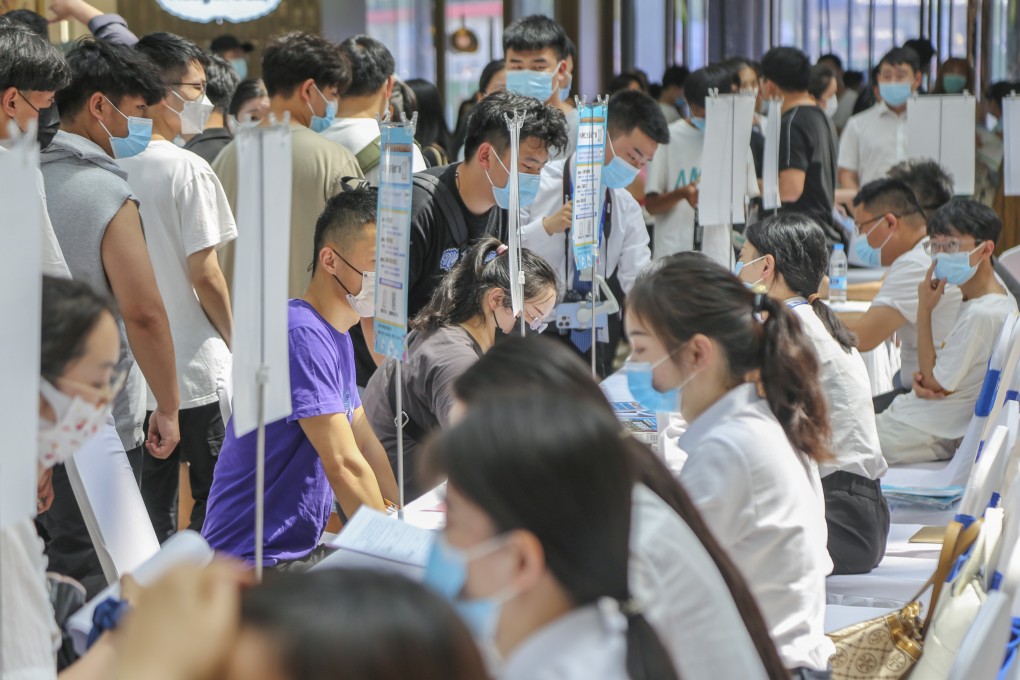China jobs: youth unemployment hits record high in June – nearly 1 in 5 young people out of work
- Young Chinese jobseekers aged 16-24 are faring worse than their peers in other major economies, and some analysts say the worst may be yet to come
- China’s broader urban unemployment rate eased slightly to 5.5 per cent in June, but youth unemployment soared to 19.3 per cent

The hits keep coming for China’s disillusioned youth who increasingly cannot seem to catch a break when it comes to landing work in a job market that – at least for their demographic – keeps going from really bad to even worse.
Nearly one out of five young jobseekers were unemployed last month as China’s youth unemployment rate hit an all-time high of 19.3 per cent in June, official figures show. It was a sharp rise from 18.4 per cent in May, and marked a year-on-year increase of 25 per cent.
This was largely the result of Beijing’s zero-Covid strategy, which forced large-scale lockdowns in Shanghai and other major cities – far from ideal conditions in which China’s latest army of fresh college graduates were plunged into.
China’s National Bureau of Statistics (NBS) has previously noted that new graduates generally push the unemployment rate upward come June and July each year, but the youth unemployment rate has seen a steady rise since October. And it has been breaking records since hitting 18.2 per cent in April – which had marked the highest point since China first started publishing the monthly data in 2018.